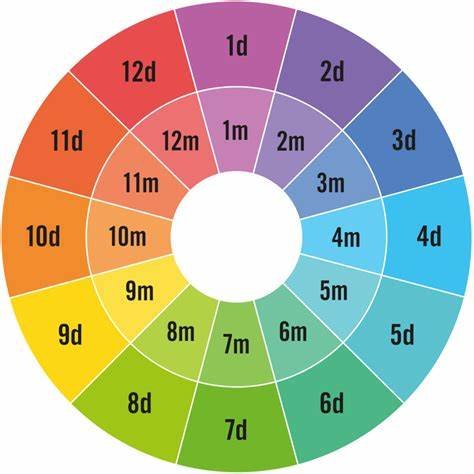Mixing different genres of music can be a rewarding challenge for any DJ or producer. Whether you’re transitioning from one genre to another in a live set or blending different styles within a track, the key to success lies in understanding the unique characteristics of each genre and how to create smooth, engaging transitions. In this post, we’ll explore some practical tips to help you mix different genres of music effectively, ensuring your mixes sound cohesive and exciting.

1. Understand the Unique Characteristics of Each Genre
Each genre has its own rhythm, structure, and sound palette. Before diving into a mix, it’s essential to understand the fundamental elements that define each genre. For example:
- House and Techno: These electronic genres are built around a steady 4/4 beat, with basslines that drive the rhythm. They often have minimalistic structures, making them ideal for seamless transitions.
- Hip-Hop and Rap: Known for its heavy emphasis on beats and lyrics, hip-hop tends to have a laid-back, groove-oriented feel. Mixing it with faster-paced genres may require tempo adjustments or creative effects.
- Rock: Rock music often features live instrumentation with powerful guitar riffs, drums, and vocals. The dynamics can be very different from electronic or pop music, so finding common ground is key.
- Jazz and Soul: These genres are often characterized by complex rhythms, improvisation, and fluid structures. They may require more subtle transitions when mixed with electronic genres.
Solution: Research and Familiarize Yourself
The first step in mixing genres is to familiarize yourself with the musical characteristics of the genres you want to blend. Listen to the rhythm, tempos, and arrangement styles to understand how they fit together. Recognize the pace, key, and mood shifts that happen across genres, and be prepared to adapt your mixing approach accordingly.
2. Use Tempo and Pitch Adjustments for Smooth Transitions
One of the biggest challenges when mixing genres is dealing with different tempos and keys. For example, electronic dance music (EDM) often has a consistent tempo around 128 BPM, while genres like hip-hop or jazz can vary significantly in tempo.
Solution: Adjust Tempo and Pitch Creatively
- Tempo Adjustment: Use pitch and tempo controls to bring songs closer in sync. Slower songs, like hip-hop or rock, can often be sped up to match the energy of faster electronic genres. Conversely, speeding up a high-energy track can give it a new, exciting twist when transitioning into slower tempos.
- Key Matching: Key compatibility plays a major role in smooth transitions between genres. For instance, moving from a house track to a reggae beat might require pitch-shifting the house track to a compatible key. Use harmonic mixing techniques or tools like the Camelot wheel to ensure that the keys blend well.
- Use of Effects: Applying time-based effects like delay, reverb, or filters can help mask any noticeable discrepancies in tempo or key and make the transition feel more natural.
3. Utilize Common Rhythms and Loops to Bridge the Gap
Some genres share similar rhythmic structures, which can make transitions easier. For example, house music and techno share a 4/4 beat, while hip-hop often incorporates similar rhythms in its drums. Recognizing these similarities can help you transition seamlessly between genres with a common rhythmic backbone.
Solution: Use Drum Loops or Percussion Elements
Incorporate drum loops, percussive elements, or rhythmic samples that work across multiple genres. For instance, a driving kick drum from a house track can be overlaid with a snare or clap from a hip-hop track to maintain the rhythm while transitioning between genres. This technique helps maintain a consistent groove, making the transition smoother and more cohesive.
You can also loop a common percussion section, like a hi-hat or cymbals, to serve as a bridge between tracks. This creates continuity, allowing you to blend genres while keeping the flow intact.
4. Blend Similar Atmospheres and Energy Levels
While some genres may have different tempos or rhythms, they can still share similar moods, textures, or energy levels. Mixing tracks that have complementary energy can be just as important as matching tempo or key. For example, you can mix the emotive depth of soul music with the intensity of electronic dance music by focusing on the atmosphere and feeling behind the tracks.
Solution: Match Energy, Mood, and Atmosphere
Consider the vibe of the tracks you’re mixing. A dark, moody track from a genre like dubstep can flow seamlessly into a rock or industrial track if the energy levels and intensity align. Conversely, transitioning from a high-energy EDM song to a more laid-back pop song may require some creative EQ adjustments to prevent the mood from shifting too abruptly.
Additionally, focus on elements like reverb, delay, or ambient textures to maintain a consistent atmosphere when transitioning between genres. For example, transitioning from a soulful R&B track to a pop song can be made easier by adding reverb to create a smoother bridge between the two genres.
5. Use Creative Transitions to Keep the Flow Engaging
Smooth transitions are the key to making a mixed set sound professional. Jumping from one genre to another without a thoughtful approach can disrupt the flow and lose the audience’s attention.
Solution: Use Transition Effects and Gradual Builds
- Crossfading: Smoothly crossfade between tracks to avoid abrupt genre changes. You can adjust the volume of the outgoing track while gradually bringing in the incoming one.
- Beatmatching: If you’re mixing live, carefully beatmatch the tracks, even if they belong to different genres. You can also use rhythmic fills or percussive loops to fill in the gap during transitions.
- Using Effects for Emphasis: Delays, filters, and phasers can be effective tools for softening the impact of genre changes. A filter sweep at the end of a track or an echo effect on a vocal can blur the lines between two genres and make the transition more fluid.
6. Practice and Experiment
One of the best ways to learn how to mix genres is through constant practice and experimentation. Each track and genre combination presents a unique challenge, and with enough time and effort, you’ll develop an instinct for what works and what doesn’t.
Solution: Record and Review Your Mixes
Record your practice sessions and listen back to see how your transitions and genre combinations are working. Take notes on what worked well and what could use improvement. Don’t be afraid to try unconventional combinations and experiment with new approaches to genre-blending. The more you experiment, the better your ear will become for understanding how genres can complement each other.
Conclusion
Mixing different genres of music may seem daunting at first, but with the right tools and techniques, it can be a rewarding and creative process. By understanding the unique characteristics of each genre, using tempo and pitch adjustments, and leveraging effects to enhance transitions, you can create dynamic mixes that surprise and engage your audience. Don’t be afraid to experiment, and always trust your instincts when blending genres. With practice and patience, you’ll become a master at mixing diverse styles and creating sets that are both exciting and cohesive.











